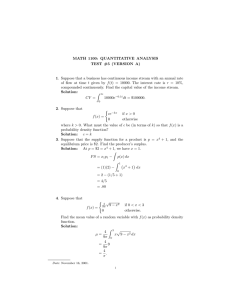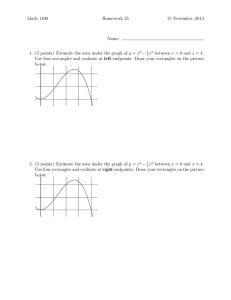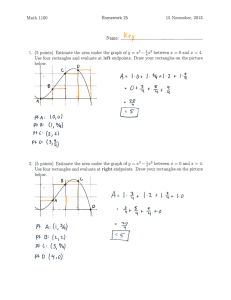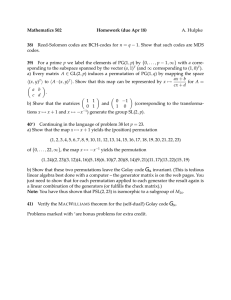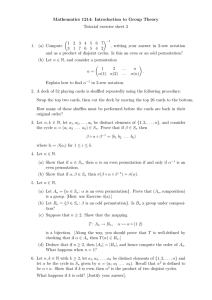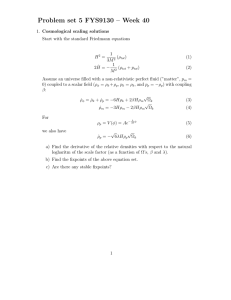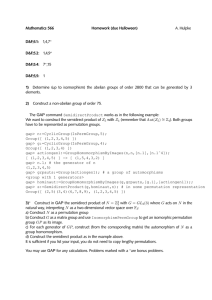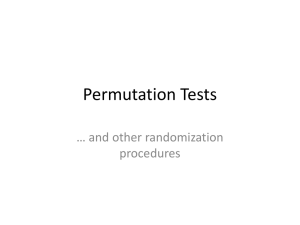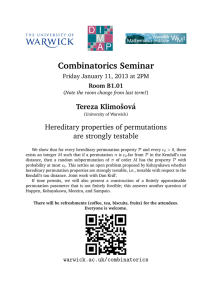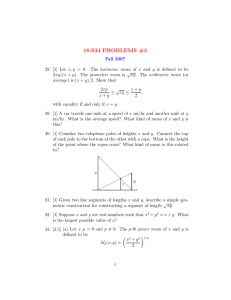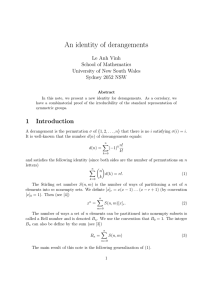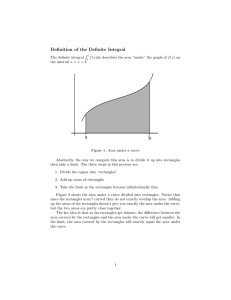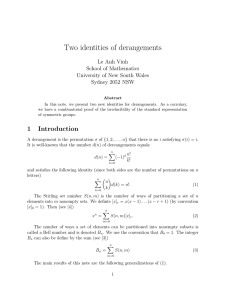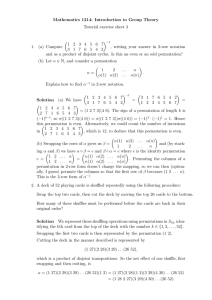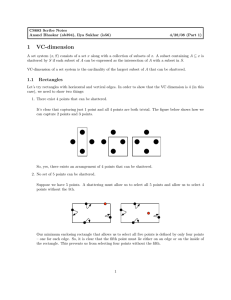MATH 503 a fixpoint? (Every permutation is selected with the same,
advertisement
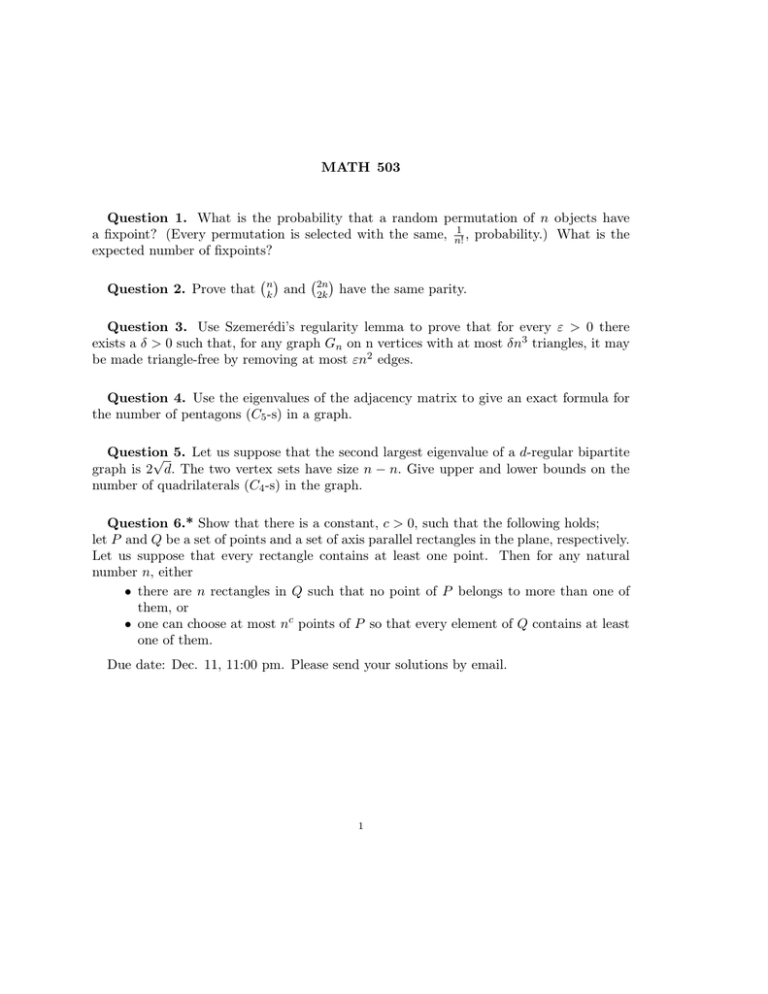
MATH 503 Question 1. What is the probability that a random permutation of n objects have 1 a fixpoint? (Every permutation is selected with the same, n! , probability.) What is the expected number of fixpoints? Question 2. Prove that n k and 2n 2k have the same parity. Question 3. Use Szemerédi’s regularity lemma to prove that for every ε > 0 there exists a δ > 0 such that, for any graph Gn on n vertices with at most δn3 triangles, it may be made triangle-free by removing at most εn2 edges. Question 4. Use the eigenvalues of the adjacency matrix to give an exact formula for the number of pentagons (C5 -s) in a graph. Question √ 5. Let us suppose that the second largest eigenvalue of a d-regular bipartite graph is 2 d. The two vertex sets have size n − n. Give upper and lower bounds on the number of quadrilaterals (C4 -s) in the graph. Question 6.* Show that there is a constant, c > 0, such that the following holds; let P and Q be a set of points and a set of axis parallel rectangles in the plane, respectively. Let us suppose that every rectangle contains at least one point. Then for any natural number n, either • there are n rectangles in Q such that no point of P belongs to more than one of them, or • one can choose at most nc points of P so that every element of Q contains at least one of them. Due date: Dec. 11, 11:00 pm. Please send your solutions by email. 1

